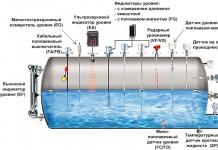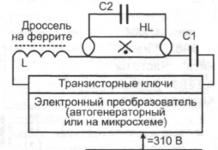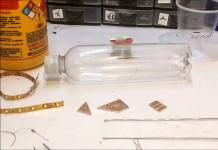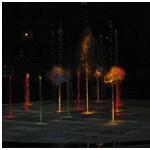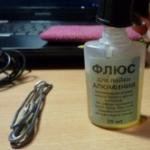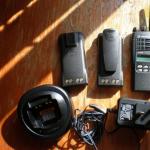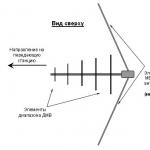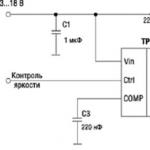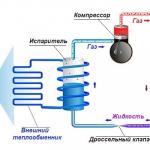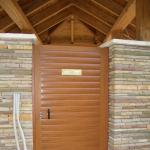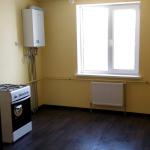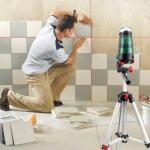Receiving and sending radio signals requires certain technical tools. If you don’t aim at something extremely complicated, then you can focus on the CB antenna. Making it with your own hands at the same time provides good opportunities for work.
How it all began?
What is CB? This designation is used as an abbreviation for the English phrase "civil band". It is adopted to designate accessible and license-free radio communications on short waves, occupying the 27 MHz band. Depending on the country, there may be minimal or no regulations governing its use. Radio communications can be portable, portable or stationary. They differ from professional stations (and a large number of amateur ones) in price and number of available functions. The simplest versions of this band can only receive and transmit audio information over relatively short distances over rough and wooded terrain. You can work to eliminate natural interference or focus on increasing the coverage distance. But let's not rush yet.
Where are they used?
CB radios have a fairly wide range of applications. They are quite reliable and affordable means of communication that allow interaction between the store and the warehouse, trucks, and so on. CB radios are also used on small fleets - boats and yachts. At the same time, the operating range on water increases significantly due to the fact that there are no serious obstacles.
The greatest use of the CB range was found by representatives of mobile communications. An example is devices installed in cars. With portable devices it is a little more difficult. The fact is that the CB range has a wavelength of 11 meters. And the ideal antenna for it should be about 2.7 m in size. On portable devices they have to be shortened by 10-20 times. The result is a fairly large weight, low efficiency when transmitting data to a compact antenna, and low amplitude noise reduction efficiency. But thanks to the fairly significant CB wavelength, the antenna can operate even in the presence of significant obstacles. It is well suited for rough terrain and forests.
Helpful information
The CB radio station allows you to contact the police, ambulance, fire department and emergency services thanks to special dispatchers. It should be noted that such an opportunity is not always available. Channel 9C is allocated for this purpose. But, alas, in practice this can only be found in Moscow and St. Petersburg. In the rest of the territory, it is better to use channel 15C, through which you can establish communication with drivers on the highways. Additionally, on 19C you can find radio amateurs. You can appeal to all these people for help. The main thing is that there would be enough power to send and receive a response signal. Now let's look at how to make an antenna with your own hands.
Theoretical preparation

So, for our homemade product there are a number of requirements:
- It must at least partially provide protection from atmospheric and industrial interference.
- It is necessary to take care of the “ground” for normal signal reception.
- To transmit data to the antenna, it must be tuned.
If we talk about the design, there are two main options: horizontal and vertical design. Each of them has its own characteristics. To find the optimal solution, the antenna is often placed at a 45 degree position. Vertical execution is considered more complex, but also better. It requires higher resistance than horizontal. In addition, the latter option is more dependent on the distance to the ground - the further it is, the higher the resistance. To meet different design requirements, several possible designs will be considered. If desired, without complicating everything too much, they can be improved. So, how to make an antenna with your own hands?
Very simple option
We will make it from scrap materials. From the purchased ones - only UNF connectors and RG-58 cable. The antenna surface will be equal to the wavelength. By adjusting it to resonance, it can be shortened and made a little longer. If the transmitter is coaxial, then the power supply must be balanced. The easiest way is to use low-frequency ferrite (from 400 to 2000 NN). When creating it yourself, a transformer from a computer power supply can play its role. It should be noted that standard yellow rings will not fit, so two turns of cable must be wound around the core. And here one question becomes relevant. Namely, which antenna cable to choose? Let's assume that we need an optimal solution in the price/quality coordinate system. In this case, you can pay attention to a regular piece of wire ShVVP 2X0.75. It is divided into two conductors, which are soldered together. The total length should be eleven meters. At the same time, maintaining equality of parties is not a critical point. You can use a plastic ring as an insulator - for example, from a baby rattle.
Dipole radio

A CB antenna of this type can be easily made with your own hands. After all, the dipole is considered very simple to learn and implement. It is possible to create a device suitable for long-term maintenance-free operation. In addition, it can work well in less than favorable conditions. What is a dipole? In fact, this is the simplest and at the same time the most common antenna, presented in the form of a symmetrical vibrator. The simplest implementation option is a straight conductor, the length of which is equal to half a wave, powered by high-frequency currents from a generator. In simple words, they take two identical pieces of wire and stretch them sequentially in space. A cable is connected in the center of this structure, from which the signal is transmitted from the dipole to the transceiver and back.
A DIY CB antenna can be made vertically or horizontally. The first option is more suitable for establishing local communication, and the second - long-distance. If the dipole is at an angle, then both possibilities are available.
Designing a dipole

Before we start doing anything, we need to calculate what we need. It should be understood that the geometric length of the dipole will be slightly less than that calculated by the formula. Why? This is due to the process of the appearance of capacitive current at the ends of the antenna, which is equivalent to an increase in its length. The exact length of the dipole (which takes into account the shortening factor) can be calculated using formulas that will not be given here, since technological tools in the form of modeling programs can be used to achieve this goal. MMANA was used as such. So, it turns out that the top point should be at a height of three meters, the center - 2.5, and the bottom - 2 m. The length of the arms is 2.57 m, the wire chosen to create the antenna has a diameter of 2 millimeters. This design has a resistance of approximately 75 ohms. This is equivalent to SWR=1.5. You can select a balancing device to power the antenna. It is essentially a balun transformer. Why this way, and not, say, through a coaxial cable? The fact is that a dipole is a symmetrical antenna. And it will not be able to be powered by the cable, because it is an asymmetrical line.
Assembling the antenna

So, to create we need:
- Plumbing plastic coupling. Suitable with a diameter of 50-55 centimeters.
- SO-239 connector.
- Plumbing plugs commensurate with the previously selected coupling.
- Three ring screws.
- Three nuts and six washers.
In the coupling, we make a plug for fastening of 6 millimeters and for the connector of 16 mm. The balun can then be connected or assembled. We will imagine that we don’t want to buy. Therefore, we take a ferrite ring with a permeability of 600, a piece of wire with a cross-section of 0.5-1 mm. We fold the wire in three and begin to wind it around the ring. After a full-fledged CB antenna coil is ready, the winding is fixed using insulating tape or clamps. We mount the balloon into the blank, and then solder the connector. The structure is almost ready. It remains to measure the required number of wires for the best antenna in order to secure them to the workpiece. Thickness doesn't matter here. As an example, you can take three meters of 1.5 mm. By the way, although the program calculated that the optimal value is 2.57, it is better to take a little with a margin. That's why it's three meters. We solder everything - and our antenna is ready.
Settings and some specific points
Since the dipole is a symmetrical antenna, the length of the arms must be the same. When creating the first devices, it is advisable not to deviate from the specified parameters. And it’s better to take a little more than the calculations indicate, because you can always cut it off, while welding it is much more difficult. As a result, you can get a fairly simple and versatile antenna. You can assemble it in an hour. Pretty good considering the satisfactory result.
For auto

A modern vehicle must have a radio or even something more. Navigation, television and radio communications - this is not a complete list. But very often you have to buy something you want yourself. Or do it. For example, a do-it-yourself car antenna for radio communication. How to implement this? Regular antennas will not work. Why? The fact is that vehicles often move during communication sessions. And traditional antennas in this case will have a certain “dead” reception zone. Even if you drive in such a way as to prevent this from happening, disconnections still occur during maneuvering.
To summarize, we can understand that a self-made car antenna must meet the following requirements:
- Have a high efficiency (after all, CB is needed not only to listen, but also to transmit information).
- Ensure reliable operation at the selected frequency.
- Fits in the cabin.
- Do not raise questions from traffic cops regarding modifications to the hulls.
Specifics of car antennas

The quarter-wave transmitter can be discarded immediately - it is too big. In this case, our CB radio station will not satisfy with its size. But if the machine has a frame structure, then you can take advantage of its advantages. In order to tune the antenna into resonance with the required frequency, a capacitor is used. But what to do with the length? One of the most popular solutions is the design of the antenna in the form of a spiral. Another method that is no less popular is to make an antenna in the form of a trapezoid. In this case, it is recommended that the length of the CB antenna be as follows: top edge - 56.5 cm, bottom base - 66.5 cm, sides - 22.5 cm + 45 cm for connection. As you can see, having made not very significant changes to the design, we were able to get the same thing that was needed before. But the trapezoidal antenna easily fits into the car. Overall, there is a lot of room for thought here.
Conclusion
That's all, the main material has been successfully reviewed. It’s not difficult to turn antenna drawings into a finished device with your own hands. But if there is no experience, then there may be certain problems with this. As they say, the one who walks can master the road. If you fail to create a CB antenna on the first try, then you should not be disappointed. Perhaps something was poorly soldered or poorly executed, they forgot to connect the power supply or something else. In addition, even if everything is done correctly, it cannot be ruled out that a certain element burned out or was produced defectively.
Avoid making antennas for radios for cars with your own hands for the simple reason that the equipment is difficult to set up later. Standard devices at the base contain a nut-like unit that allows the driver to adjust the device to the wave being used. For manual models the situation is different. An antenna for a walkie-talkie can be made with your own hands, but problems will arise for large enterprises purchasing frequencies. The state committee monitors the goods sold so that consumers avoid mutual interference. Railways do not intersect with shipyards. Sometimes industrialists need communications, everyone will start improving the equipment, we will find a situation: subscribers will hear each other. Working at different companies. Ask SCRF: they will give recommendations; perhaps it will be enough to demonstrate the modification in action to specialists to assess the impact on neighboring communication domains.
Communications and radio antennas
They have repeatedly said: in everyday life, linear and circular polarization are more often used, the latter mainly on satellites. Walkie-talkies are no exception. Horizontal polarization was taken away by television, leaving vertical polarization to radio broadcasting... walkie-talkies. Logical. When we hold the radio, the antenna is positioned vertically. The signal reflected by the terrain is visible, rotated at a fixed angle. Thanks to the effect, the dull military man demonstrates a “violation” of the laws of physics... Ideal reception is carried out by a vertically standing antenna. If you don't believe me, do the opposite!
Those who read reviews about homemade antennas will be amazed, but not surprised. Again, single-ended quarter-wave vibrators made from a piece of standard coaxial cable. Polarization, frequencies, why something has to change. They once said: you can install a television antenna made of cable vertically, pick up a radio, if you find one on the right wavelength...
Original radio antenna. Inside the knob there is a copper spiral, the tip of which is attached in the area of the top. With some walkie-talkies you can simply get to the curls, with others the problem is unsolvable. Why spiral?
According to the course of electrodynamics of radio wave propagation, the antenna radiates in the direction of the axis, the wave will be polarized in a circle, according to the direction of the curl. Only if the coil length is close to the wavelength. The context in question assumes a figure of half a meter or more, forget about proximity.
The MMANA program gives an idea of the radiation pattern. Well-wishers kindly put a radio antenna there (145 MHz), avoiding changing the parameters, looked at the field (opening the application):
- In vertical polarization, an even circle emerged in azimuth. It is clear that the human body will distort the diagram! Indeed, the spiral emits vertical polarization almost exactly. The level is - 3 dBi.
- The horizontal polarization shape resembles a figure eight, the level is much lower. If you hold the radio with a spiral antenna horizontally, the reception will deteriorate and will not reach zero.
At the angle of elevation with horizontal polarization a semicircle is formed, with vertical polarization a dip is formed along the axis. No useful upward signal is emitted. Let the man with the walkie-talkie climb the tree. And both hold the devices vertically, the reception will be due only to the horizontal component, as well as the reflected signal. These are the antennas that walkie-talkies use... It is not surprising that amateurs are tempted to change the design. Therefore, spirals are used.

In reality - and on the MMA file - the antenna consists of a spiral, the cap plays a significant role. The idea is clear. In real conditions, communication must be carried out in all directions; a quarter-wave vibrator is unable to meet the specified requirements. Why a quarter? The half-wave vibrator is longer. Dimensions matter. The spirals began to twist not from a full life. It's just that a long antenna for a walkie-talkie is too much of a luxury. It will pierce your pocket, you will be tortured to hold it with your hand, and windy weather will make you vomit. You have to make sacrifices. Let us recall that in terms of vertical polarization, the radiation pattern demonstrates the similarity of a torus, typically. The horizontal one adds something like a dumbbell (rough approximation), forming the missing corners and areas of space. The radiation pattern for reception and transmission is the same.
We will design walkie-talkies by removing unusual reception properties in all directions. The energy will rush towards the torus. The broadcast range will increase. If we re-equip both radios, we will get an additional gain at the cost of losing the final reception (transmission) from above and below. We remind you that the radiation patterns for reception and transmission are the same (identical).

Let's increase the range of the radio station by modifying the antenna
The conclusion is obvious: we want to increase the range - we saw the radiation pattern of the factory antenna - we need to direct the power to vertical polarization, to the torus. How to do it is clear, but one question looms on the horizon - the wave impedance of the radio antenna. Do you know the meaning? They talked about how to try it on! If the length of the feed line is a multiple of half the wavelength, the antenna impedance is transmitted to the output without change. We use the effect for measurement.
Various devices are used (RF generator). For those thinking about taking one, let’s say: the TV’s local oscillator is capable of producing a similar frequency, but setting it up is another matter. Let's talk separately. You will need a high-frequency voltmeter; a conventional one is unsuitable for measurement purposes. The device is measured by the voltage of the RF generator in a suspended state, the scale is calibrated to show 100%. Assemble a circuit connected in series:
- antennas;
- variable resistor.

Connect the generator to the circuit and measure the voltage of the resistor. Turn the adjustment until the arrow starts to show 50%. The resistance of the variable resistor becomes equal to the characteristic impedance of the antenna. It is necessary to take a non-inductive reactance (which does not have its own inductance). A homemade radio antenna should, if possible, replicate the electrical parameters of the factory one. The characteristic impedance is taken to be close to the original one. The measurement process is clear to readers.
The designer's choice is small: two global families. Cables with characteristic impedance 50, 75 Ohm. The first is used by communications, the second by television. The antenna of a portable radio is made from the one that is closer in nominal value to the measured value. The quarter-wave vibrator (without a spiral) has a resistance of 35 Ohms. It is difficult to predict the parameters of a purchased antenna. It is easier for practitioners to make two antennas for a walkie-talkie using different types of cable. Then test each one on the ground, assessing the nature of the changes.
Making a radio antenna
Let us briefly recall the process of manufacturing an antenna for a walkie-talkie. We considered digital television, WiFi, 3G. The audience of the VashTekhnik portal knows how to make an antenna for a walkie-talkie. Feel free to copy the methods. First you need to know the frequency. More precisely - better. The radios have several channels, the frequencies are registered in the passport. Select a channel by specifying the antenna dimensions.
Let the frequency be 435 MHz. We find the wavelength using the school formula, dividing the speed of light by the indicated value: 299792458 / 435000000 = 689 mm. To make a quarter-wave vibrator, you need to divide the number by another 4, we get - 172.25. The length of the antenna for the walkie-talkie will be 17 cm. Try to keep the millimeters more accurately. The screen does not need to be cleaned. It will be a receiving surface, the band will increase. If your hands are itchy, peel off the braid and leave the dielectric around the main core.
The old antenna is desoldered, a clamp is ready for the new one. All that remains is to fix it in place, enjoy the connection. The antenna for the walkie-talkie is made by hand. By the way, if you don’t want to remove the screen, solder it together with the core in one bundle when mounting it on the chip. If you consider expanding the range unnecessary, it’s better to remove the screen. The first and second options have advantages; the solid cable is stronger. Better to leave it as is. The radio antenna will last longer. Make sure to glue on a nice cap-tip so that the copper stops oxidizing. We say goodbye until next time.
Copy factory designs. Enterprise radios break down. The adapters remain, the devices are thrown away. An invaluable chance for a radio amateur to prove himself. The antenna is covered with rubber, which can be easily peeled off. Or use an accessory from a broken product. The process of copying is not directly prohibited, except for products protected by patents. The case concerns the industrial production of products for the purpose of marketing, obtaining a fixed profit by performing the specified actions.
0 Users and 1 Guest are viewing this topic.
This circuit of a shortwave radio station contains only three transistors. The simplest walkie talkie for beginner radio amateurs. The design was taken from an old magazine, but it has not lost a bit of its relevance. The only thing that is outdated is the radio components, which need to be replaced with modern analogues, as a result the characteristics of the radio intercom will improve.
Radio station diagram
The scheme is simple, especially if you understand its operation. I suggest you immediately visually divide it into the left side with one transistor and the right side with two transistors. The transistor VT1 assembles a transmitter and a receiver at the same time. When the switch closes contacts “1”, the radio is in receive mode and this transistor operates in supergenerative detector mode. And when the contacts close to mode “2”, this is transmission and the transistor works as a master oscillator. With this, I think it’s clear. A simple low-frequency amplifier is assembled on transistor VT2, VT3, which, depending on the position of the switch, either amplifies the signal from the microphone and transmits it to the transmitter, or amplifies the signal from the supergenerative detector and transmits it to the loudspeaker. By the way, the loudspeaker and microphone are one and the same element - a high-impedance DEM telephone capsule.Radio parts
Coil L1 is wound on a frame with a diameter of 8 mm with a ferrite core turn to turn and has 9 turns of PEL wire with a diameter of 0.5 mm. Coil L2 is wound on top of coil L1 and has 3 turns of the same wire. Coil L3 has a diameter of 5 mm and contains 60 turns of PEL wire with a diameter of 0.5 mm. The primary winding of the output transformer of the transistor receiver can be used as inductor L4.Antenna design

The antenna was made by me from a thick aluminum wire, with a piece of insulation, on top of which the L3 coil was wound.
My modernization
I made such a walkie-talkie back in school, but then I already changed all the transistors to more modern ones and with a high gain. For example, I replaced VT1, VT2 with KT361, and VT3 with KT315.Now, of course, I would change the polarity of the power supply and the polarity of the capacitors, replace all transistors from the n-p-n structure to p-n-p, and p-n-p to n-p-n. Well, I would install modern transistors. There are no special requirements for transistors, so absolutely any will do.
The author of the diagram says that the range of action of radiums of the same type in open areas is 100-200 meters. I accelerated such radios to 500 meters, for this I used modern transistors, increased the antenna to 900 mm, plus increased the generator current by replacing the 100 Ohm resistor with a 50 Ohm one. Someone will say that it’s all due to the increase in the antenna, with which I disagree and will say that with the “native” antenna I was able to communicate over 300 meters.
Settings
If you assembled the radio correctly and from serviceable parts, then the entire setup will come down to setting the L1 coil to a frequency of 27 MHz. This can be done with a subline core or a capacitor in the circuit.Civil radio stations are used by people whose professions or hobbies are directly related to the need to get in touch regularly. Therefore, CB radios with frequency (FM), amplitude (AM) and single-sideband (SSB) modulation are in great demand.
Signal boosters
Russia is a huge country; its vast expanses do not have enough radio power, so radio amateurs tend to install special signal-amplifying devices. An amplifier for a CB radio station can be bought at many specialized outlets, but it is much more profitable to do this in the RadioExpert online store.
The amplifier for the CB radio station, bought on the resource, is of high quality. Its price is at an acceptable level. In an effort to buy amplifying equipment for a walkie-talkie, it should be remembered that the device is only responsible for amplifying the outgoing signal.
The low cost, which distinguishes the amplifier for a 27 MHz radio station, is far from the only advantage of the site. The RadioExpert online store delivers throughout Russia and the CIS countries. In addition, the company's specialists provide full information support to customers.
The sale of radio products is carried out around the clock, seven days a week on the site. You can also order delivery here. Before purchasing the product you are interested in, we recommend that you fully study the price list and consult with specialists in order to select radio equipment, the price and quality of which are in the optimal ratio.
What to look for when choosing an amplifier?
The cost of amplifying equipment is not the main criterion that determines the quality of work. In some cases, you can inexpensively purchase a domestic amplifier for a 27 megahertz walkie-talkie, which is in no way inferior in operation to an imported analogue.
When choosing radio products of this type, attention should be paid to the following points:
- availability of guarantee;
- output power from 100 to 200 Watts;
- original components.
You can buy a 27 MHz radio amplifier right now. Collecting your order and delivering it will not take much time.
